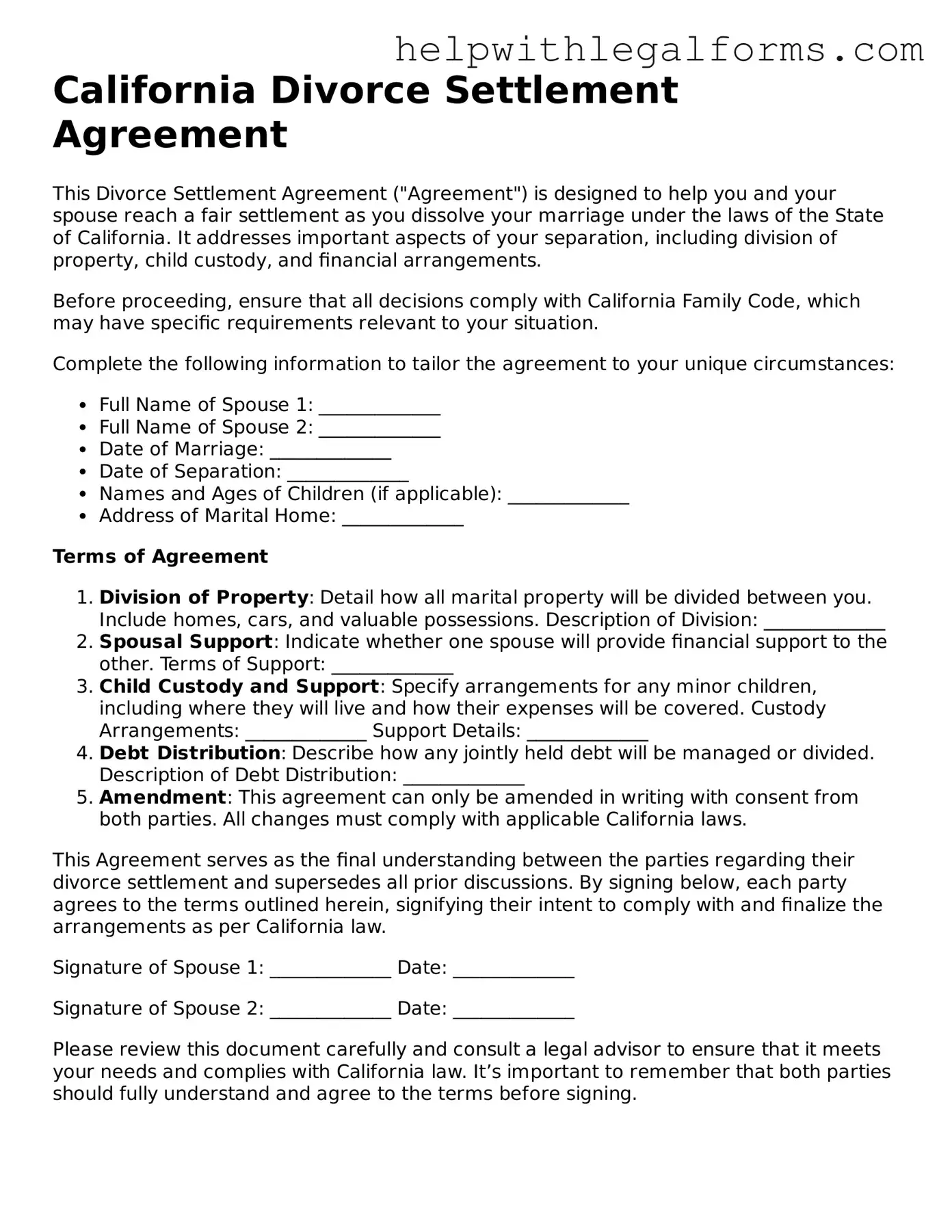What is a California Divorce Settlement Agreement?
A California Divorce Settlement Agreement is a legal document that outlines how a divorcing couple has agreed to divide their assets, debts, and other responsibilities. This agreement covers various aspects such as property division, child custody, child support, spousal support, and any other relevant issues. Once signed, it becomes a binding contract that both parties must adhere to.
Do I need a lawyer to create a Divorce Settlement Agreement in California?
While it's not mandatory to have a lawyer to create a Divorce Settlement Agreement in California, it's highly recommended. Legal guidance can ensure that the agreement is fair, complies with California law, and addresses all necessary legal aspects. A lawyer can also provide valuable advice on negotiation and can represent your interests more effectively.
How can I file a Divorce Settlement Agreement in California?
After both parties have signed the Divorce Settlement Agreement, it must be filed with the court. This is generally done by submitting the agreement to the clerk of the court handling your divorce proceedings. It's important to ensure that all required forms and documents are completed accurately and filed according to the court's specific procedures and deadlines.
What happens if my spouse and I cannot agree on a settlement?
If you and your spouse cannot agree on a settlement, you may need to attend mediation or court-ordered settlement conferences. If these efforts fail, your divorce may proceed to trial, where a judge will make decisions regarding the division of assets, custody, and other disputes. This process can be lengthier and more costly than reaching an agreement outside of court.
Can a Divorce Settlement Agreement in California be modified?
After a Divorce Settlement Agreement is finalized and approved by the court, changes can be challenging. Minor modifications might be agreed upon if both parties consent. However, significant changes require court approval and are only granted for substantial reasons such as a significant change in financial circumstances, health status, or in the best interests of the children involved.
Is mediation required before reaching a Divorce Settlement Agreement?
In California, couples are encouraged to seek mediation before going to trial in order to reach a Divorce Settlement Agreement. While not mandatory in all cases, mediation is often required by courts when disputes involve child custody and visitation. Mediation can save time, reduce conflict, and help both parties reach a mutually acceptable agreement.
How does the California Divorce Settlement Agreement impact child custody arrangements?
The California Divorce Settlement Agreement allows parents to outline their agreed-upon child custody arrangements, including legal custody (decision-making power) and physical custody (where the child lives). The agreement should detail schedules, including holidays and vacations, and plans for child support. It's paramount that these arrangements prioritize the best interests of the child and comply with California law. Modifications to custody arrangements after the agreement is finalized require showing a significant change in circumstances.
